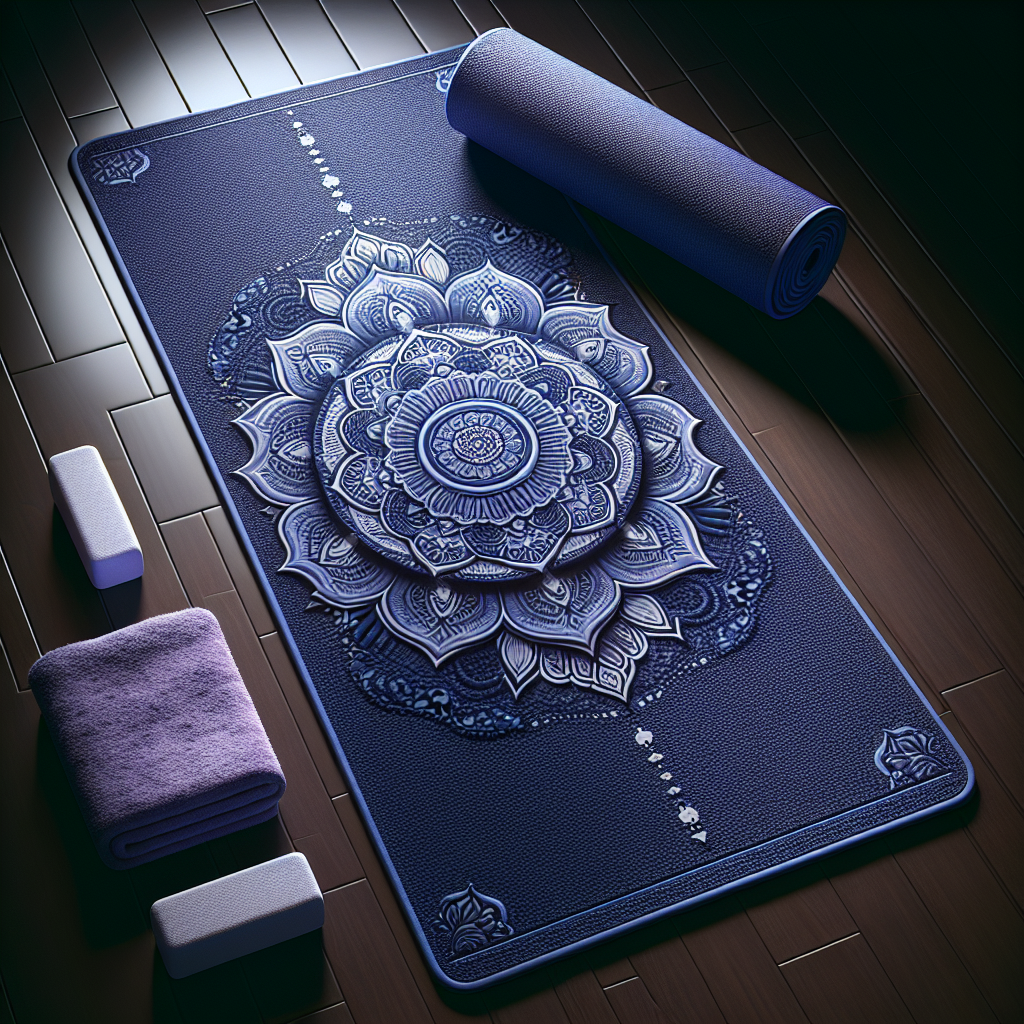
Yoga has become a popular practice across the globe, embraced by people of all ages and fitness levels. At the heart of this ancient discipline lies an often-overlooked essential: the yoga mat. This versatile tool not only provides a non-slip surface for various poses but also enhances your overall practice. In this article, we’ll delve into the different types of yoga mats, their benefits, and how to properly care for them.
Types of Yoga Mats
When selecting a yoga mat, it’s essential to choose one that aligns with your specific practice and personal preferences. Here are some of the most common types:
1. PVC Mats
Polyvinyl chloride (PVC) mats are one of the most widely-used types due to their durability and affordability. They provide excellent cushioning and traction, making them suitable for various styles of yoga. However, they’re not eco-friendly since they’re made from synthetic materials.
2. TPE Mats
Thermoplastic elastomer (TPE) mats are a more environmentally friendly option compared to PVC mats. They are non-toxic, lightweight, and biodegradable, providing a good grip without the harsh chemicals found in PVC. TPE mats are ideal for those who prioritize eco-conscious products.
3. Natural Rubber Mats
Natural rubber mats are favored for their excellent grip and cushioning. They are made from sustainable rubber tree latex, making them a good choice for eco-friendly yogis. However, those with latex allergies should avoid this type.
4. Cotton Mats
Cotton mats are often used in more traditional styles of yoga, such as Iyengar. These mats offer a soft, natural surface and are washable, though they may not provide as much traction as synthetic mats. They’re ideal for gentle practices or for use over other mats.
5. Jute Mats
Made from plant fibers, jute mats are durable and biodegradable. They assist in wicking away moisture, making them appropriate for both gentle and more vigorous styles of yoga. However, they can be coarse compared to other materials, which some may find unappealing.
6. Travel Mats
Travel yoga mats are ultra-thin and lightweight, making them easy to carry while traveling. Despite their thinness, many provide sufficient grip and cushioning for on-the-go practice.
7. Extra Thick Mats
For those who require more cushioning or have joint sensitivity, thick mats are beneficial. They are especially useful for restorative yoga, providing a softer surface for poses.
Benefits of Yoga Mats
Using a quality yoga mat offers numerous advantages for practitioners:
1. Safety
A good yoga mat provides a non-slip surface, crucial for maintaining balance during various poses. It minimizes the risk of slipping and falling, particularly in styles involving vigorous movement.
2. Cushioning
Yoga mats offer cushioning that supports your joints, making it more comfortable to perform poses. This is especially important for beginners or those with injuries.
3. Hygiene
Having a designated yoga mat helps create a personal space for practice, ensuring you’re performing poses in a clean environment. It can also prevent the spread of germs from studio floors.
4. Improved Performance
A suitable mat can enhance performance by allowing practitioners to focus on their movements rather than worrying about slipping or discomfort.
5. Mind-Body Connection
The act of rolling out your mat signifies a commitment to your practice. It creates a ritual that helps signal to your body and mind that it’s time to focus and unwind.
How to Care for Your Yoga Mat
Ensuring the longevity of your yoga mat involves proper care and maintenance. Here are some simple tips:
1. Regular Cleaning
Most mats can be cleaned with a mixture of mild soap and warm water. Wipe it down with a soft cloth or sponge after each use to prevent the buildup of dirt and bacteria. You can also use specialized mat sprays available in stores.
2. Avoid Harsh Chemicals
Do not use bleach or harsh cleaning agents as they can degrade the material of your mat over time.
3. Air Dry
After cleaning, allow your mat to air dry fully before rolling it up. Never put it in direct sunlight for prolonged periods, as this can deplete its elasticity and lifespan.
4. Store Properly
When not in use, store your mat flat or rolled up loosely in a cool, dry place. Avoid bending it, as this can create creases or damage the surface.
5. Use a Mat Bag
Investing in a mat bag not only makes transportation easier but also protects your mat from dirt and wear.
Conclusion
Choosing the right yoga mat is an integral part of your yoga journey. With a variety of options available, understanding the benefits and care routines can enhance your practice. Whether you prefer a thick, ultra-cushioned mat or a lightweight travel option, each type caters to different needs, preferences, and styles. By taking good care of your mat, you’ll ensure it remains a faithful companion on your path to wellness for years to come.



